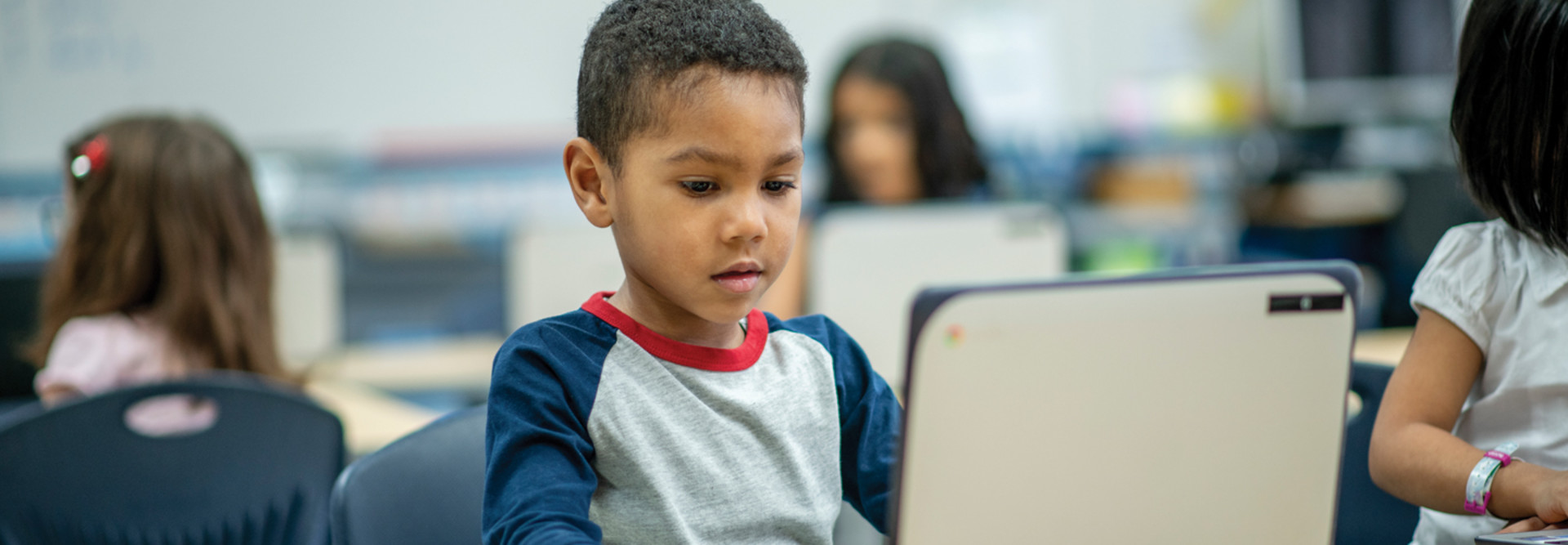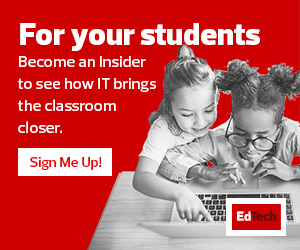Implement Tech with a Focus on Student Outcomes
When making decisions about technology use in schools, it’s important to frame the issue with the right questions. “What will this new technology achieve for students?” is more important than “What can this new technology do?”
Digital resources and online tools should be designed for and directly tied to improving short- and long-term student learning outcomes. Focusing on outcomes instead of product features — the “bells and whistles” — allows educators to better align solutions to drive equity and achievement in classrooms.
To help with decision-making about which technologies to adopt, educators should consult learning science. The learning sciences are grounded in the neuroscience of how our brains make sense of information, and they tell us that technology can enhance learning in a unique way when it’s used correctly. The bottom line is, technology should always support nontechnological student learning outcomes.
Create Effective Guardrails for Educational Technology
The start of the 2022-2023 school year returned classrooms to some sense of normalcy, but educators are still faced with the difficult task of addressing pandemic-related unfinished learning.
Balancing the need for efficiency in the classroom and supporting a variety of student learning needs can feel like a juggling act. Digital guardrails — setting limitations around what students can access on the internet during class — can help drive productivity.
The internet is a vast and varied place, and while it can be an incredible learning tool, it can also quickly become a distraction or even a danger. With more than 547,200 new websites created globally every day and 500 hours of new video posted to YouTube every minute, managing the ever-changing landscape of the internet while keeping students safe and on task can seem like an almost-impossible responsibility for teachers.
LEARN MORE: Tech and physical classrooms boost online learning quality for K–12 educators.
Factors to Consider When Setting Guardrails
There are a number of solutions available that can help educators set thoughtful parameters around students’ digital exploration and filter out what isn’t needed. The ability to adjust guardrails in real time, based on that day’s activity or a specific student’s learning needs, can lead to a more engaging learning environment.
When setting guardrails, it is helpful to consider a number of factors:
Content Areas: Depending on the class subject, teachers may need to adjust the guardrails to preserve student safety and focus while still enabling effective exploration.
For instance, a student in a geometry class may only benefit from engaging with select math-related websites, whereas someone in a world studies class might need broader searching capabilities. Knowing which websites or online resources provide legitimate educational benefits for the class subject helps determine the right parameters.
Students’ Needs: Students in the same class often work on different activities or toward different learning goals. A group collaborating on a research project needs a wide range of digital resources, whereas a student taking an exam only requires access to one website.
Learning Modalities: Giving students the flexibility to choose the way they want to learn, and providing opportunities that capitalize on their specific learning modalities, is the backbone for blended learning.
When implementing guardrails, consider how different groups of students will be learning that day. Those in teacher-led instruction may only need access to one resource at a time, whereas those engaging in a collaborative activity will need entirely different digital resources. Adjusting guardrails in real time will create a streamlined experience for students.
UP NEXT: How can K–12 schools overcome common one-to-one device hurdles?
Technology’s Value: Another point to consider is whether technology is even needed for the specific learning activity or desired outcome. While technology resources and online tools have been a game changer for education, teachers also want to avoid using technology only for technology’s sake.
Transparency: Setting clear expectations at the beginning of class and making students aware of the guardrails will help avoid confusion or frustration. It can be helpful to tell students, “In today’s activity, you will only need access to our Pear Deck slides and Google Maps. If you feel you need additional resources to complete the tasks, please let me know.”
It’s clear the COVID-19 pandemic accelerated the adoption and integration of technology into classrooms across the nation. With this shift comes challenges but also an opportunity to ensure we are using tech to serve the best interest of students.
At the end of the day, students deserve safe and engaging experiences with educational technology, and teachers must feel confident using one-to-one devices in the classroom. By focusing on student outcomes and implementing thoughtful guardrails, we can create effective learning environments that empower teachers and allow students to thrive.











